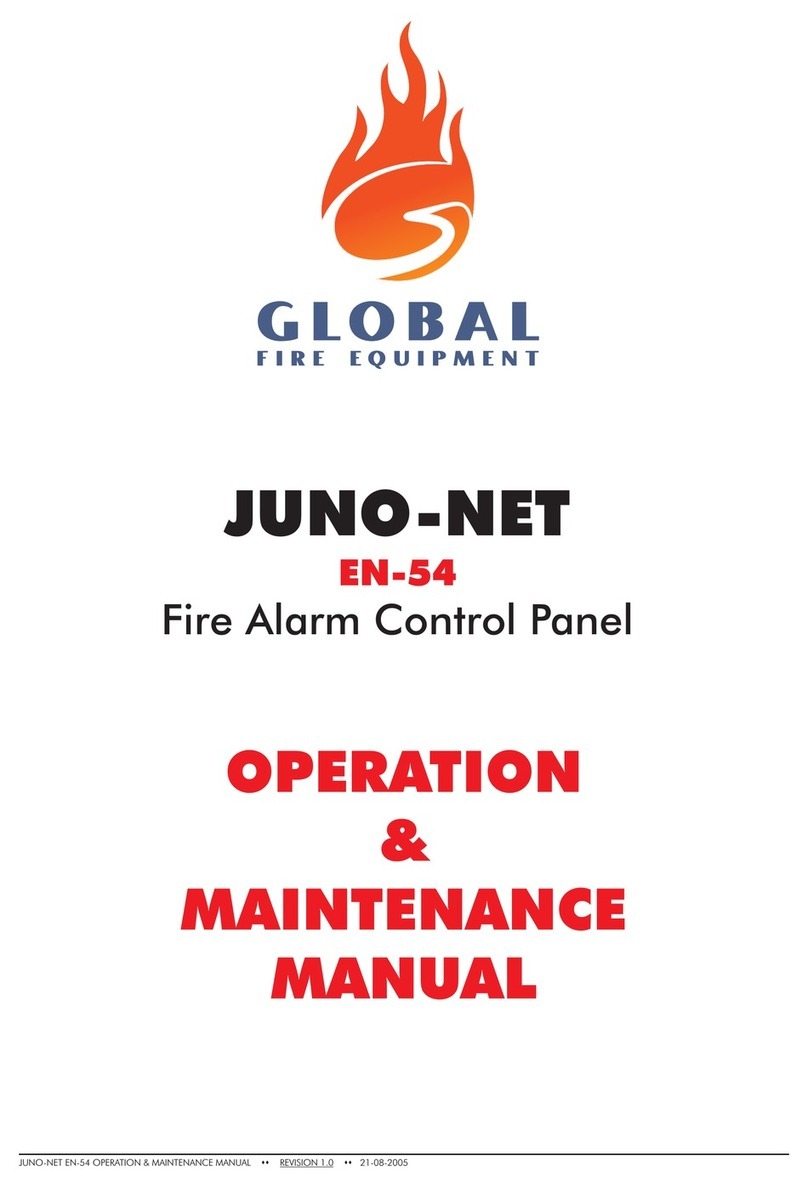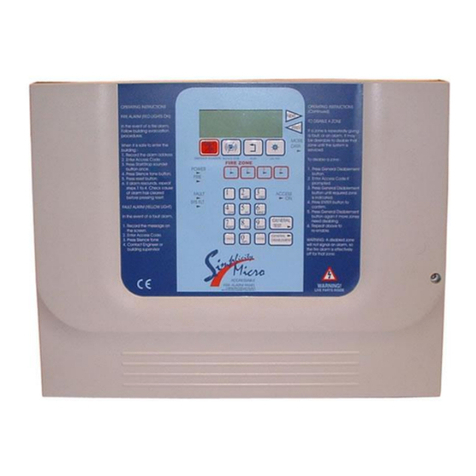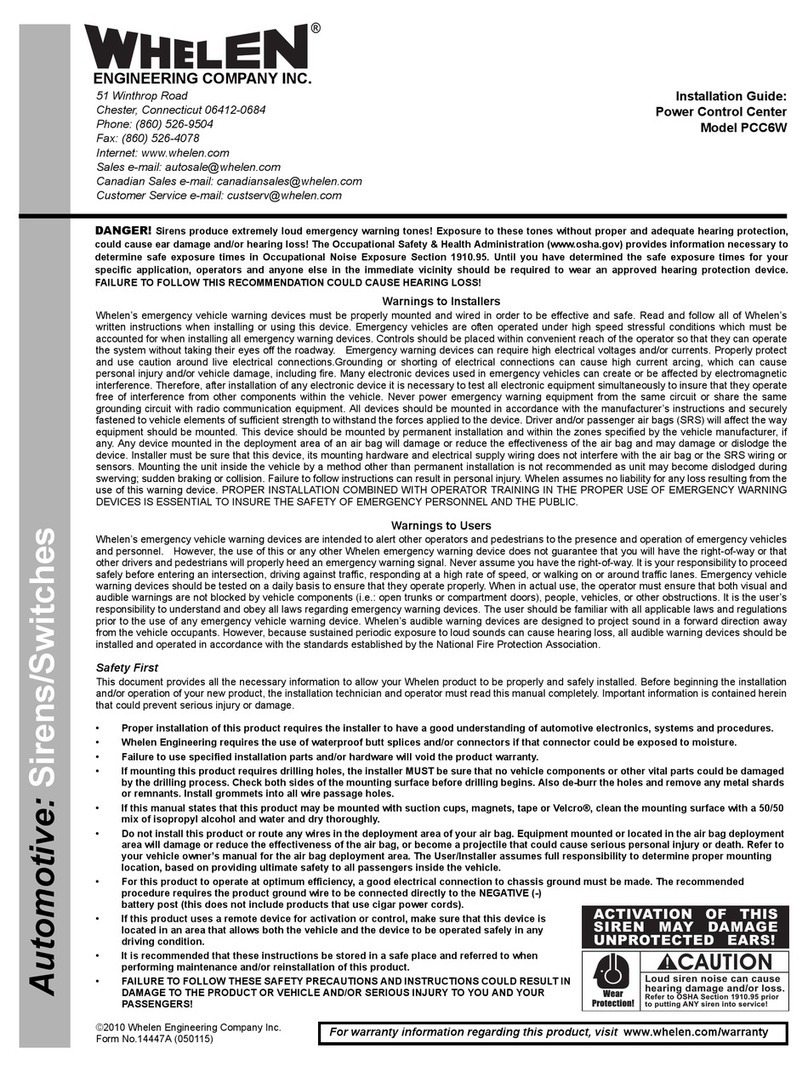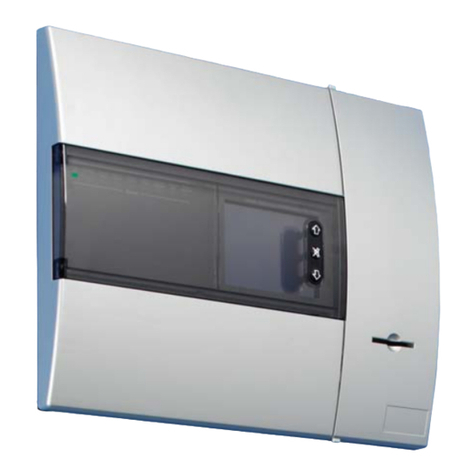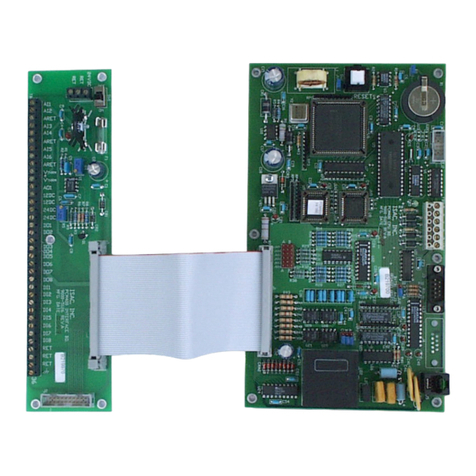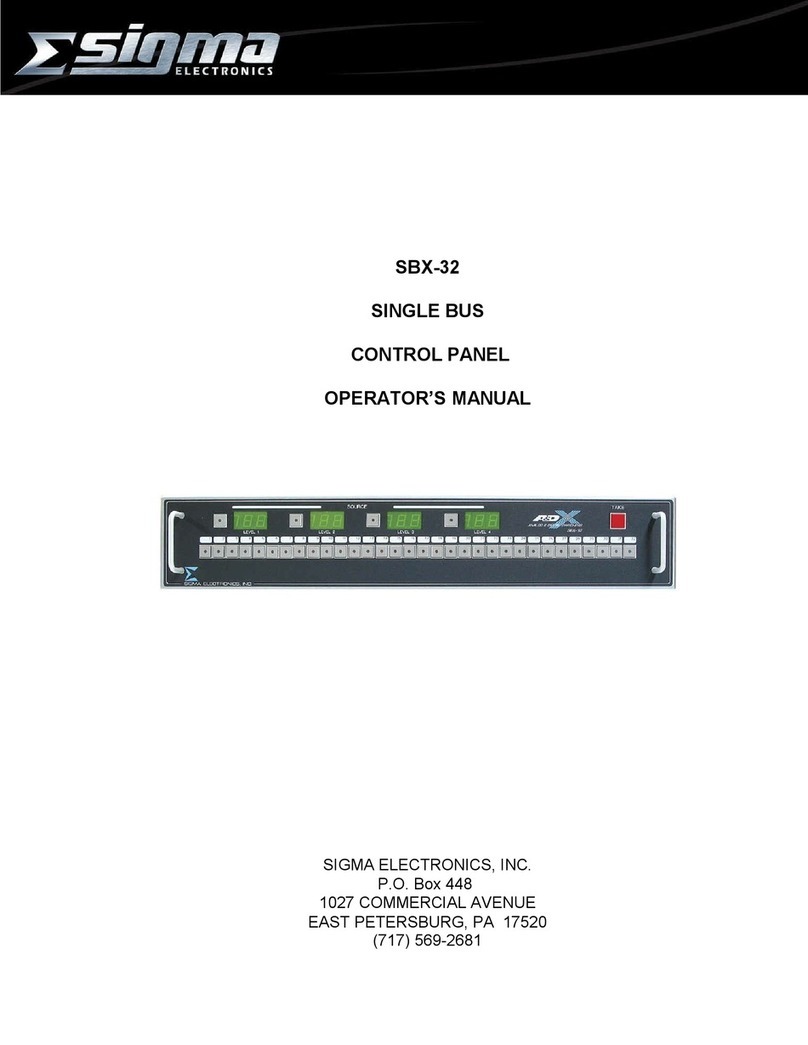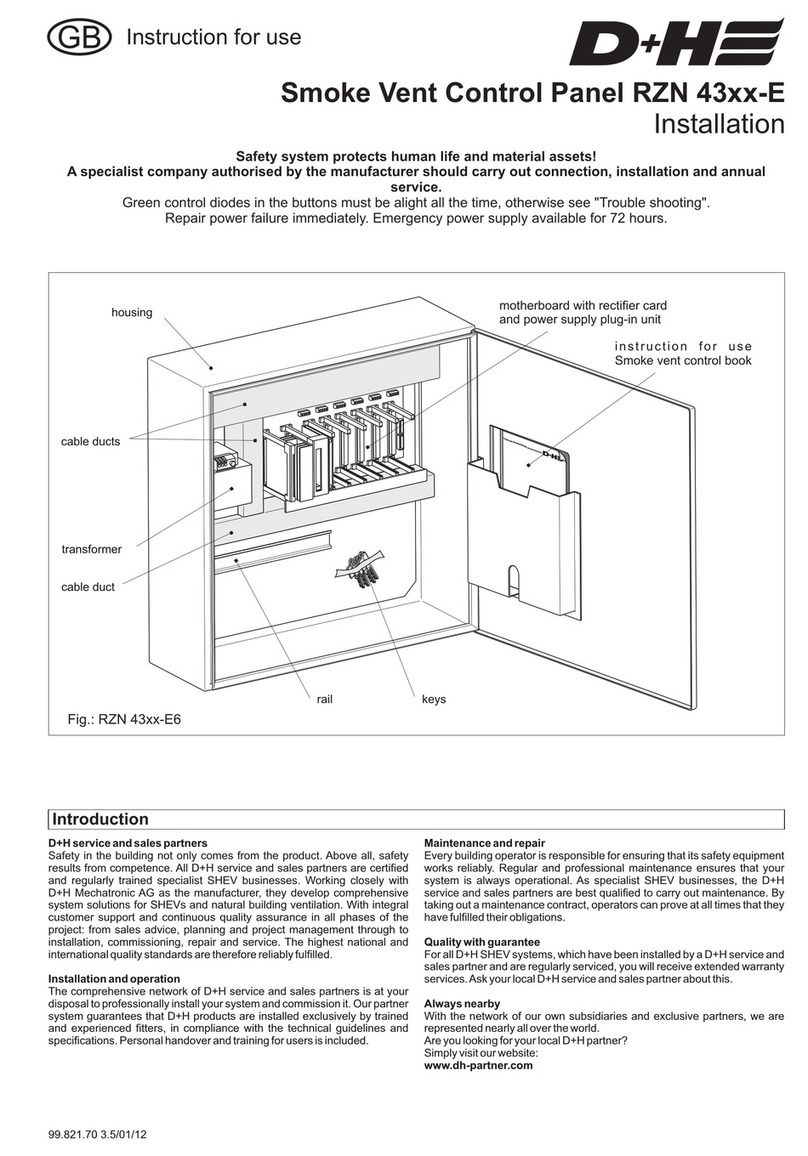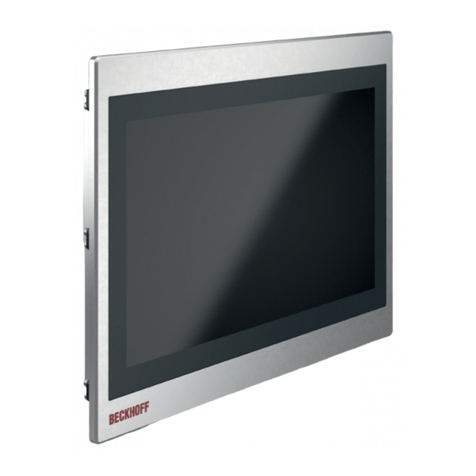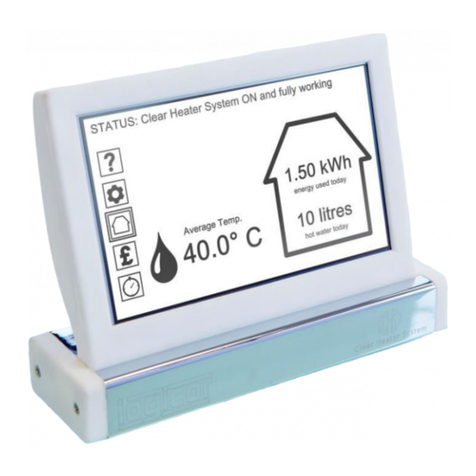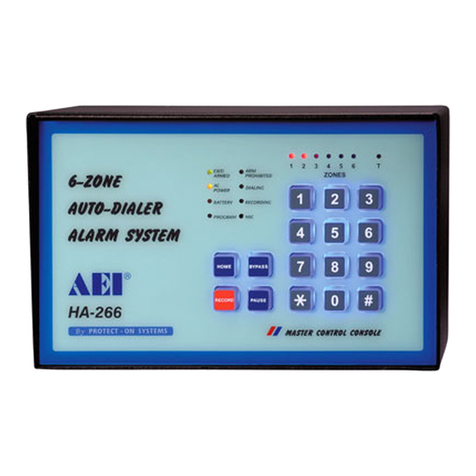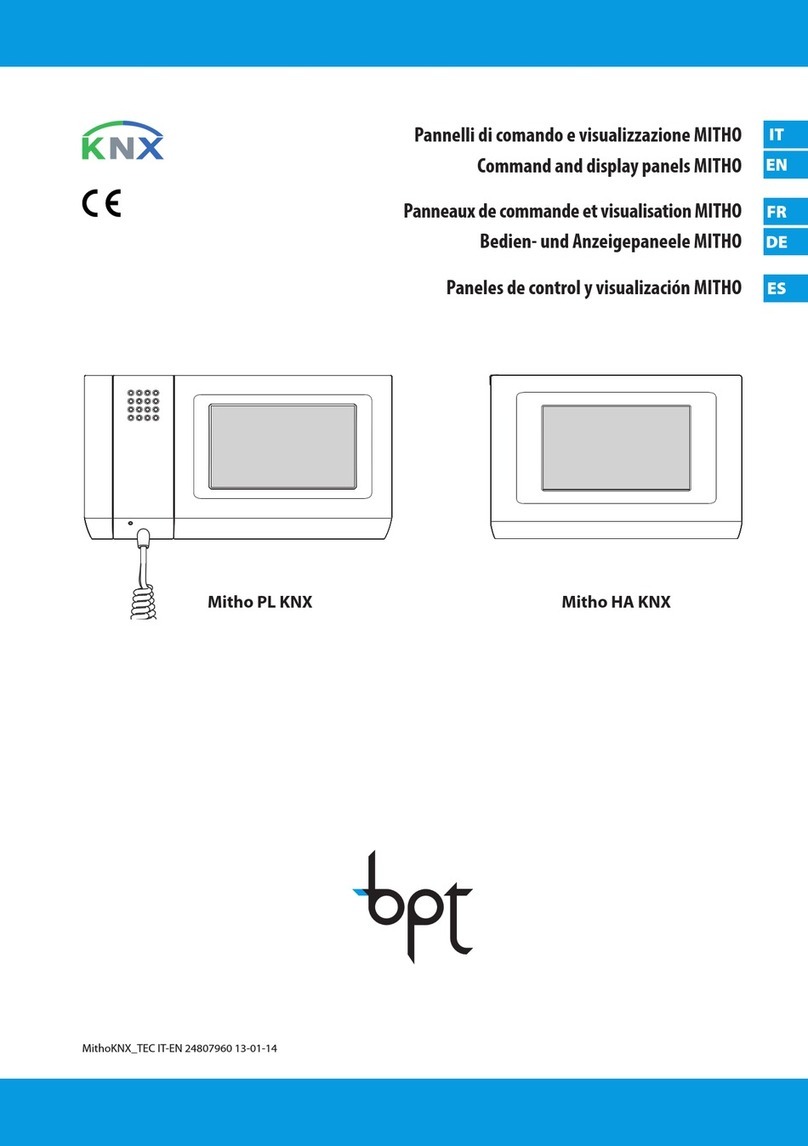Global JUNIOR V4 Guide

JUNIOR V4
FEBRUARY 19, 2007 REVISION 1.0
INSTALLATION
&
COMMISSIONING MANUAL

CONTENTS
1
OVERVIEW
Introduction....................................................................................................................
Key Features...................................................................................................................
Access Levels..................................................................................................................
Typical System Schematic.................................................................................................
Power Requirements........................................................................................................
Battery Requirements.......................................................................................................
ABS box information.......................................................................................................
Identifying Components...................................................................................................
EN54 Information...........................................................................................................
Recommended Cables....................................................................................................
Analogue Loops, Conventional Sounders and Data Loops..........................................
Limitations......................................................................................................................
Definitions......................................................................................................................
INSTALLATION
Introduction....................................................................................................................
Panel............................................................................................................................
Mains Power Connection.........................................................................................
Other Panel connections........................................................................................
Repeaters......................................................................................................................
Panel Main Board - Connection Definitions......................................................................
Fitting Junior Expansion Loop Card.................................................................................
Data Loops...................................................................................................................
Panel RS485...........................................................................................................
Repeater RS485......................................................................................................
Panel Fibre Optic....................................................................................................
Repeater Fibre Optic...............................................................................................
Analogue Loop..............................................................................................................
Conventional Sounders..................................................................................................
Auxiliary Fire Relays (2) andFault Relay (1)........................................................................
Panel Batteries...............................................................................................................
COMMISSIONING
Introduction...................................................................................................................
The Panel Buttons..........................................................................................................
Getting The Panel Running.............................................................................................
Getting A Repeater Running.............................................................................................
Getting Into Programming Mode......................................................................................
Getting The System Running............................................................................................
Communications Check..........................................................................................
Panel Check...........................................................................................................
Learning Which Devices Are Fitted............................................................................
Sounder Audibility Check.........................................................................................
Panel............................................................................................................
5
5
6
7
8
9
10
11
14
15
15
15
16
17
17
17
17
17
18
19
20
21
22
23
24
25
26
26
27
28
28
31
31
32
34
34
34
35
35
35
INSTALLATION & COMMISSIONING MANUAL - REVISION 1.0 - 19.FEB.2007

CONTENTS
2
COMMISSIONING (cont...)
Getting The System Running(cont...)...................................................................................
Analogue Loop Monitoring.......................................................................................
Open Circuit Test............................................................................................
Conventional Sounder Monitoring.............................................................................
Detector Tests..........................................................................................................
Detector Tests By Zone.....................................................................................
Unassigned Detector Test.................................................................................
Wrapping Up Installation And Commissioning....................................................................
Battery Fault Message Test........................................................................................
Power Failure Test.....................................................................................................
ADVANCED FUNCTIONALITY
Programming Functions General.......................................................................................
Complete List Of Functions......................................................................................
Keys To Use Within Functions....................................................................................
General..................................................................................................................
Specific Functions
1 Review Historic Log..................................................................................................
1-1 Display Historic Log.................................................................................................
1-3 Clear Historic Log....................................................................................................
1-5 Read/Clear Autostart Count.....................................................................................
3 Zones - Disable & Assign.........................................................................................
3-1 Disable Zones.........................................................................................................
3-2 Assign Sounder Groups to Zones..............................................................................
3-3 Assign I/O Groups to Zones.....................................................................................
3-4 Assign Zone to Device.............................................................................................
3-5 Zone Sounder Delay Set-up......................................................................................
4 Sounders - Disable & Assign...................................................................................
4-1 Sounder Configuration............................................................................................
4-2 Configure Sounder Groups.....................................................................................
4-3 Disable Sounders...................................................................................................
4-4 Assign Sounder Group to Device.............................................................................
4-5 Inhibit Sounders for Device......................................................................................
4-6 Sounder Delay Set-up.............................................................................................
4-7 Override Sounder Delays........................................................................................
36
36
36
36
37
37
37
37
38
38
39
39
40
40
41
41
41
41
42
42
42
42
42
42
43
43
43
44
44
44
45
45
INSTALLATION & COMMISSIONING MANUAL - REVISION 1.0 - 19.FEB.2007

CONTENTS
3
INSTALLATION & COMMISSIONING MANUAL - REVISION 1.0 - 19.FEB.2007
5 Input/Output - Disable & Assign
5-1 Configure I/O Groups...........................................................................................
5-2 Select Fault I/O Group...........................................................................................
5-3 Assign I/O Group to Device...................................................................................
5-4 Inhibit I/O for Device.............................................................................................
5-5 I/O Unit Action upon Evacuate...............................................................................
5-6 I/O Unit Delay or Immediate..................................................................................
5-7 I/O Delay Set-up...................................................................................................
6 Device Set-up..........................................................................................................
6-1 General.................................................................................................................
6-1-1 Disable Loops ..........................................................................................
6-1-2 Device Disable..........................................................................................
6-1-3 Set Selective Disablement...........................................................................
6-1-4 Set Device Reporting Details.......................................................................
6-1-5 Set Immediate Evacuate for Device.............................................................
6-1-6 Device Activation Overrides Delays.............................................................
6-1-7 Inhibit Auxiliary Relays................................................................................
6-1-8 Global Sensitivity Set-up.............................................................................
6-1-9 Configure Timed Sensitivity..........................................................................
6-2 ............................................................................
6-2-1 Select Device Heat Grade...........................................................................
6-2-2 Select Device Smoke Sensitivity.....................................................................
6-3 Discovery Specific..............................................................................................
6-4 Automatic Address Setting (SAM).........................................................................
6-4-1 Activate ASET Mode (SAM)........................................................................
6-4-2 Clear Loop................................................................................................
6-4-3 Clear Device.............................................................................................
Troubleshooting SAM................................................................................
............................................................................
Other Device options...................
46
46
46
47
47
47
47
47
48
48
48
48
48
49
49
49
49
50
50
51
51
51
52
54
55
56
56
57

58
58
58
58
58
58
59
59
59
59
59
60
60
61
61
61
61
61
62
62
62
63
63
63
63
64
64
64
65
65
65
65
66
68
7 Monitor Device Counts & Test ..
7-1 Device Count, Type & Value.......................................................................................
7-2 Test Sounders............................................................................................................
7-3 Sounders on Test Activation........................................................................................
7-4 Test Zones................................................................................................................
7-6 Light LED on device...................................................................................................
8 General.....................................................................................................................
8-1 Time/Date & Timers..................................................................................................
8-1-1 Set Date & Time..........................................................................................
8-1-2 Define Day & Night....................................................................................
8-1-3 Delays Off at Night....................................................................................
8-1-4 Configure Evacuate Timer............................................................................
8-1-5 Device Starts Evacuate Timer........................................................................
8-2 Special Features Set-up..............................................................................................
8-2-1 Two Devices to Evacuate.............................................................................
8-2-2 Call Points to Evacuate................................................................................
8-3 Memory - BEWARE, ENGINEERS ONLY.....................................................................
8-3-1 Clear Customer Flash Memory.....................................................................
8-3-2 Clear Non-Volatile RAM..............................................................................
8-3-3 Calculate Customer Flash Checksum...........................................................
8-3-4 Calculate Program Flash Checksum.............................................................
8-4 Other Features.....................................................................................................
8-4-1 Active/Installation Mode.............................................................................
8-4-2 Upload/Download Link to PC.....................................................................
Uploading/Downloading Customer Site Data..............................................
The PC Loader Software.............................................................................
Windows® COM PORT Set-up...................................................................
The Panel.................................................................................................
8-4-4 Set User Access Code..................................................................................
8-4-5 Set User Access Facilities..............................................................................
8-4-6 Select language..........................................................................................
8-4-8 Set Installer Code........................................................................................
TECHNICAL SPECIFICATIONS ....................................................................................
CE DECLARATION OF CONFORMITY..........................................................................
..................................................................................
CONTENTS
4
INSTALLATION & COMMISSIONING MANUAL - REVISION 1.0 - 19.FEB.2007

OVERVIEW
5
INSTALLATION & COMMISSIONING MANUAL - REVISION 1.0 - 19.FEB.2007
Introduction
This document covers the installation and commissioning of a JUNiOr fire alarm panel. This document is
intended for use by a competent, qualified, fire alarm installation engineer.
The JUNiOr fire alarm system should be tailored to the building requirements. The complete system
should be designed to meet all applicable regulations. The installation must then be performed in
accordance with the system design. This manual not only clarifies the components and connections during
installation but will also assist in commissioning and maintenance.
This manual covers the installation and commissioning of a complete system.
All PCBs contain Electrostatic Sensitive Devices.
Take suitable ESD (Electrostatic Discharge) precautions when removing or installing printed circuit boards
(PCBs).
.
.
.
.
.
.
ELECTRO-STATIC SENSITIVE DEVICES (ESD)
TAKE SUITABLE ESD PRECAUTIONS WHEN REMOVING OR
INSTALLING PRINTED CIRCUIT BOARDS.
JUNiOr FIRE ALARM PANEL
Key Features
This manual has been written for panel software revision 3.07. Newer versions of
panel software will be similar but some details may differ.
Single loop panel - Expandable up to 2 loops.
Supports connection to Mini-repeater via RS485, Fibre-Optic or TCP/IP
125 device addresses per loop
Up to96 VULCAN (addressable) ultra low current base sounders (32 address limit)
32 individually programmable sounder addresses
Full SAM & MAM support - Wizmart & GFE protocol only
2 Fire output relays (change-over) and 1 Fault relay (nc - opens on fault)
2 conventional alarm outputs (Individually programmable)
Both detection loops monitored for integrity
384 fully programmable zones
512 fully programmable sounder groups
512 I/O groups
Event log (rolling, 2000 entries)
Apollo Protocol
Compatible with all our own low cost ancillary modules
Backlit LCD display with 4 rows of 40 characters
Programming by integrated keypad or Loader PC software (Juno Net Loader Version 2.12)
Multiple language support (menu selectable)
Integrated 16 zone LED fire zone indication
Available in , GFE or Wizmart versions (Hochiki pending)

NOTE:
6
INSTALLATION & COMMISSIONING MANUAL - REVISION 1.0 - 19.FEB.2007
ACCESS LEVEL 1 - General User
Unless otherwise indicated, in order to enable the operation of a particular switch, either a valid User or Programming Access
Code is required to be entered.
The only exceptions are the following:
1- Lamp Test Switch
2- Queue Review Switches( Fire, fault, Test and Disabled)
3- Delays Active Switch. During an alarm condition and while delays are active.
By entering a valid User Access Code (Factory default —————), the authorized user gains access to the operation of all
switches at the front of the panel's display. Authorized User Access also grants the possibility of enabling or disabling zones.
ACCESS LEVEL 2 -Authorized User Controls
Access to this level is accomplished by the introduction of a code using the panel's keypad. The user code is factory set to
ÇÇÇÇÇand after entering each digit in turn, press OK to confirm entry.
INTERNAL BUZZER SILENCE
The occurrence of any new fire or fault condition will initiate the operation of the internal buzzer. By pressing this switch, the
operation of the buzzer will be stopped until a new fire or fault appears on the system.
ALARM SILENCE / RESOUND
Activates all sounders. A second press deactivates all sounders. The button LED (red) is illuminated whilst the sounders are
activated.
SOUNDERS ENABLE /DISABLE
Pressing this button will enable/disable all sounders both conventional sounder circuits and addressable sounders.
DELAYS ACTIVE
Pressing this button will activate any preprogrammed delays. The yellow LED associated with this button and the general
disablements LED will both be lit. A second press of this button will deactivate the delays and the LED. Under any fire condition
the delays will be activated. If during the course of these delays, at access level 1(General User - code entry not required), this
button is pressed, the delays will be overridden and the sounders and together with any other fire indicating equipment, will be
activated.
USER & INSTALLER ACCESS CODES
To enter both codes use the arrow keys ÆÇÈ and when finished press ENTER.
Access Level 2 - Press ENTER, then Authorized User Access Code ÇÇÇÇÇ and then press ENTER to confirm entry.
Access Level 3 - Press ENTER, then Installer Access CodeÇÈÇÈÇ and then press ENTER to confirm entry
FRONT PANEL KEYPAD KEY'S INSTRUCTIONS
ENTER Used to confirm entry of any data or selection.
ÇUsed to increase selection or number. Also used for code entry.
ÈUsed to decrease selection or number. Also used for code entry.
Æ Used to change, when required, from Loop 1 to 2 and vice versa.
ESC Escape key. Used to exit a particular function.
OVERVIEW
It is not possible to introduce text for labels using the front panel keypad.

7
INSTALLATION & COMMISSIONING MANUAL - REVISION 1.0 - 19.FEB.2007
OVERVIEW
Typical System Schematic
ISO ISOOPT ZMU TMP BGU LSM I/O +
24 V
CON
DET
CON
DET
CON
DET
EOL
4K7
ION
EOL
10K
EOL
SNDSNDSND
ALL AUX RELAYS RATED AT
50V AC/DC 1 AMP RESISTIVE
DATA LOOP CONNECTOR
MPX: MULTIPLEXED ZONE LED CONNECTOR
AUXILIARY
POWER SUPPLY
OUTPUT
CLASS CHANGE
OR
REMOTE EVAC.
REMOTE
DISABLEMENT
OF SELECTED
DETECTORS
VOLTAGE FREE
NORMALLY OPEN CONTACTS
NON-LATCHING ACTION
PC Loader
DB9 Female
Connector
Loop 2
Connections

8
INSTALLATION & COMMISSIONING MANUAL - REVISION 1.0 - 19.FEB.2007
OVERVIEW
Internal maximum 24V / 7AH
Battery
The maximum alarm sounder current is 400mA for both conventional sounder circuits.
The maximum quiescent current per loop is 275mA. The loop short circuit (trip) current is 900mA.
Voltage
Primary supply voltage 85 - 264 V A.C.
EMC Standard EN55022 class B
EN61000-4-2,3,4,5,6,8,11
EN61000-3-2,3
Current 1.7A PSU’s recommended for 1 and 2 loop panels.
Power Requirements
Mains supply voltage 85-264V 50/60 Hz
Internal power supply Min. 20 V DC – Max. 30 V DC (28.5 V DC nominal) Max. Ripple 1 V peak-peak
Total output current 1,7A @230Vac
Supply and battery charger monitored YES
Batteries monitored YES
Max Battery size 2 x 12V 7AH VRLA
Mains Fuse 4 A – 250 V Slow Blow – 20 mm
Battery Fuse 1.6 Amp Resettable – Electronic Fuse
Max Current Draw from Battery (Mains Fail) 1.5 Amp Max.@ Max. Operating Temperature
Power Supply Specification - MEANWELL Model: PS-45-27
NEUTRAL
LIVE
MEANWELL
DANGER
220 VOLTS
MODEL: PS-45-27
EARTH

NOTE:
For 2 loop panels 7AH batteries are always recommended.
9
INSTALLATION & COMMISSIONING MANUAL - REVISION 1.0 - 19.FEB.2007
OVERVIEW
Battery Requirements
The battery AH required are calculated from the following formula
Quiescent current in mA of
the panel with everything
connected.
Alarm current in Amps
(sounder load)
Standby time required in
hours divided by 1000.
Alarm time in hours
X
X
(
(
)
)
+
+20%
Round up to the next available battery size.
Quiescent currents for individual equipments are listed below:
Example
A given installation has a single loop panel with 58mA detector load, 1.4A sounder load (including
loop sounders) and a 24 hour standby requirement.
Quiescent current in
mA of the panel with
everything connected.
Alarm current in Amps
(sounder load)
S t a n d b y t i m e
required in hours
divided by 1000.
Alarm time in
hours
XX
X X
(
(
(
(
)
)
)
)
+
+
+
+20%
80 (Jr. panel)
+
58 (detector load)
24 (standby in hrs)
divided by
1000
0.5
(alarm time in hrs)
105 (Jr. panel)
+
58 (detector load)
=
138mA
=
3.312AH
= 4.094 AH +20% (0.82AH) = 4.913 AH
The next available battery size is 5 AH
=
0.782AH
=
0.024H
=
0.5H
=
163mA +1.4A (sounder load)
=
1.563A
EQUIPMENT
QUIESCENT
CURRENT
(mA)
ALARM
CURRENT
(mA)
Junior Panel
24V auxiliary outputs (2 off)
80
Refer to connected devices
105

10
INSTALLATION & COMMISSIONING MANUAL - REVISION 1.0 - 19.FEB.2007
ABS box information
Size 273 (W) x 403 (L) x 106 (H) mm
Weight without batteries 1,6 Kgs
Dimensions
106 mm
33 70 3
273 mm
403 mm
VIEW FROM SIDE
VIEW FROM TOP
VIEW FROM FRONT
VIEW FROM REAR
OVERVIEW

11
INSTALLATION & COMMISSIONING MANUAL - REVISION 1.0 - 19.FEB.2007
Identifying Components
Inside JUNiOr
OVERVIEW

REAR VIEW
12
INSTALLATION & COMMISSIONING MANUAL - REVISION 1.0 - 19.FEB.2007
Identifying Components
FRONT VIEW
JUNIOR-MB:
JUNIOR MAIN BOARD
OVERVIEW
Junior Expansion
Loop Card
Junior Expansion
Loop Card

13
INSTALLATION & COMMISSIONING MANUAL - REVISION 1.0 - 19.FEB.2007
J-NET-INT-FO:
FIBRE OPTIC INTERFACE
J-NET-INT-485-NEW
INTERFACE FOR RS485
COMMUNICATION
J -SIM:UNIOR
JUNiOr SIM CARD
J-NET-INT-TCP/IP
INTERFACE FOR TCP/IP
COMMUNICATION
Typical cable form (one end)
VIEW FROM TOP
THROUGHOUT THE MANUAL,
THE PIN ON THE 5 WAY MOLEX
INDICATES WHICH PIN IS
RED
Nº1
VIEW FROM FRONT
MALE FEMALE
NOTE:
Identifying Components
OVERVIEW
NOTE:
Junior can only be networked with
repeater panels.

14
INSTALLATION & COMMISSIONING MANUAL - REVISION 1.0 - 19.FEB.2007
EN54 INFORMATION
In accordance with EN54pt.2 1997/AC:1999 clause 13.7, the maximum number of sensors
and/or manual call points in this panel, will not exceed 512 units.
The Fire Detection Control Panel complies with the requirements of EN54 pt. 2 and 4
1997/AC:1999. In addition to the requirements of the above mentioned standard, the unit
conforms to the following optional functions:
OPTION EN54 pt. 2 Clause
Indication Fault Signals from Points 8.3
Controls Delays for activation of outputs 7.11
Disablement of each Addressable point 9.5
Test Condition 10
Outputs Outputs to fire alarm devices 7.8
In addition to the functions required by the standard EN54 pt. 2 1997/AC:1999, the panel supports
ancillary functions that are not required by the above mentioned standard, namely:
Ancillary Functions:
Panel network connection ports
Panel to PC programming software (upload / download) port.
Remote class change
Auxiliary relays outputs
Analogue Loops:
Each analogue loop can be connected to a maximum of 125 devices. According to EN54 pt. 2
clause 12.5.2, in case of a short circuit or interruption of the analogue detection loop only a
maximum of 32 detectors or call points per loop, can be prevented at any one time, of transmitting a
fire alarm. In order to assure compliance with this clause, a loop isolator must be installed after
every 32 detection devices.
OVERVIEW

15
INSTALLATION & COMMISSIONING MANUAL - REVISION 1.0 - 19.FEB.2007
Analogue Loops, Conventional Sounders and Data Loops
Fire rated Cables for Loops and Sounder Circuits
2 2
AEI type Firetec Multicore Ref. F1C1 (1 mm ) to F1C2.5 (2.5 mm ) in 2 core
2 2
AEI type Firetec Armoured Ref. F2C1 (1.5 mm ) to F2C2.5 (2.5 mm ) in 2 core
2
AEI type Mineral Insulated Cable (all types up to 2.5 mm
BICC types Mineral Insulated twin twisted conductor cables, Ref. CCM2T1RG and CCM2T1.5 RG
2
BICC types Mineral Insulated Pyrotenax (all types up to 2.5 mm )
2
CALFLEX type Calflam CWZ 2 core type up to 2.5 mm
2 2
PIRELLI type FP200 Gold 2 core type from 1 mm to 2.5 mm
2
FIRETUF (OHLS) FTZ up to 2.5 mm . Manufactured by Draka
All cables should be screened.
Minimum detection loop conductor section size is 0.5 sq.mm
Maximum detection loop conductor section size is 2.5 sq.mm
There should only be one analogue detector loop per shielded cable.
Analogue detector loops and conventional sounders should not run in the same shielded cable.
If the system requires one or more repeaters, it will be necessary to use a four core data cable to create a
data loop between the panel and the repeater. Alternatively, it is possible to use multi-mode dual-core
fibre-optic cable or a TCP/IP connection for the same purpose.
Data loop cable should be RS422/485 grade data cable, eg:
Signal cables for RS485 Communication Links (twisted pair) to Repeater panels
12 AWG Signal 88202 Belden 9583 WPW999
14 AWG Signal 88402 Belden 9581 WPW995
16 AWG Signal 88602 Belden 9575 WPW991
18 AWG Signal 88802 Belden 9574 WPW975
FIRETUF FDZ1000 by Draka 2 core
PIRELLI type FP200 Gold 2 core
PIRELLI type FP-PLUS
Fibre Optic: Multi.mode Dual Core sheathed fire proff with 62,5µ/125µ fibre terminated in ST
connectors
Recommended Cables
Limitations
A fire alarm system can provide early warning of a developing fire but it does not assure protection
against damage or loss resulting from a fire.
The fire alarm system should be designed and installed in accordance with all relevant regulations
and codes of practice.
To ensure maximum protection the system should be regularly tested and inspected by qualified fire
alarm installation personnel. Inspection and testing should be carried out in accordance with the
appropriate local standards.
OVERVIEW

16
INSTALLATION & COMMISSIONING MANUAL - REVISION 1.0 - 19.FEB.2007
OVERVIEW
Definitions
Analogue Loop The physical link, usually fireproof 2 conductor shielded wiring cable, forming a ring of
interconnection between sensors and the detection panel.
Cable form A connecting lead. Typically a length of flat cable with connectors at both ends.
Conventional Sounder A Conventional Sounder is an audible output device that is connected to the
Conventional Sounder outputs on the Panel. It is different electrically to a Loop powered Sounder.
Data Loop This may take the form of RS485, a fibre optic link or by TCP/IP. It provides communications
between the Panel and Repeaters.
Detector Any type of fire sensor (heat, smoke) that is connected to an Analogue Loop.
Device A detector, sounder, interface module or call-point connected to an Analogue Loop.
Evacuate A system state where all sounders are activated simultaneously. Pressing SOUND ALARMS
will generate an evacuate condition.
Fibre Optic Link A connection method for data that uses light instead of electrical signals. The
connection is made using fibre optic cables rather than copper electrical cables. Fibre optic signals can
travel far greater distances than electrical signals with less risk of electromagnetic interference.
Flash Non-volatile memory inside the panel used to store the program and the customer site data. Flash
data storage is very robust and needs no power at all to retain the data.
Local Sounder A local conventional sounder is an audible output device (bell or sounder) that is
connected to the local bell output on the panel.
Loop Sounder The term Loop Sounder is used to describe an audible output device that is connected to
and controlled individually by an Analogue Loop. Loop Sounders are different electrically from
Conventional Sounders.
NVRAM Non-volatile Random Access Memory. Any information stored in this memory will not be
cleared when power is removed from the system. The system has an internal battery for the NVRAM.
PCB Printed Circuit Board.
Repeater A Repeater is a remote terminal to the Panel. Everything that is displayed on the Panel, with the
exception of zonal LEDs, is also displayed on the Repeater. Any LEDs illuminated on the Panel are
illuminated on the Repeater. Key presses at the Repeater are sent directly to the Panel, as if the input were
actually occurring at the Panel.
SIM CARD Single In-line Memory Card. Fitted to the SIM CARD is the Flash memory that contains the
Panel software and the system settings (Customer Flash Memory ).
The System The Panel, Repeaters and all devices.
Zone A situational group of devices. A Zone can consist of a collection of any of the devices connected
to the system.
.
.
.
.
.
.
.
.
.
.
.
.
.
.
.
.
.

17
INSTALLATION & COMMISSIONING MANUAL - REVISION 1.0 - 19.FEB.2007
INSTALLATION
Introduction
This section covers the physical installation of the system. It primarily focuses on the parts that are required
and how they should be connected together. Do not connect the mains power or the batteries at this stage;
commissioning the system is covered in the next section of this manual.
Installation should always be performed in accordance with a system plan.
Panel
The control panel should be located where access to the internal components is not restricted and where
the unit is not exposed to high levels of temperature, moisture, vibration and shock.
Any metal swarf could damage the PCBs if it is still present when the panel is powered up so it is
recommended that all PCBs are removed from the box whilst the box is being installed. Make a note of the
positions of the PCBs before removal.
Mains Power Connection
The panel must be earthed. The LIVE connection must be made to the fused input on the power supply
module. This input will also have a BLACK or BROWN wire leading into the power supply unit.
The connector with a BLUE wire leading into the power supply unit is the NEUTRAL.
Other Panel connections
These are detailed in the relevant following sections. Most connections are made from the JUNiOr
mainboard.
Repeaters
Repeaters Zare installed in a similar manner to the Panel. Each Jr. panel can supply a maximum of 4
Mini-repeaters.
The Repeater should be located where access to the internal components is not restricted and where the
unit is not exposed to high levels of moisture, vibration and shock.
Avoid placing the Repeater in direct sunlight as this may impair reading of the LCD display.
Any metal swarf could damage the PCBs if it is still present when the Repeater is powered up so it is
recommended that all PCBs are removed from the box whilst the box is being installed. Make a note of the
positions of the PCBs before removal.
.
.
.
.
.
.
.
.
.
.
.
.
.
.
.
ELECTRO-STATIC SENSITIVE DEVICES (ESD)
TAKE SUITABLE ESD PRECAUTION WHEN REMOVING OR
INSTALLING PRINTED CIRCUIT BOARDS.
Warning - observe ESD precautions when handling the PCBs.

18
INSTALLATION & COMMISSIONING MANUAL - REVISION 1.0 - 19.FEB.2007
JUNIOR MAIN BOARD
Loop connections
Conventional sounder circuit 1
Conventional sounder circuit 2
5 pin connector for RS485, Fibre-optic or TCP/IP (LAN) connection with repeater panel
5 pin connector for multiplexed zone LEDs or relays
Auxiliary change-over relay output 1(Activated by any fire present on the system, disabled by front button)
Auxiliary change-over relay output 2 (Activated by any fire present on the system, disabled by front button)
Fault NC relay contact (Activated by any fault present on the system, opens on fault)
Remote Evacuation or Class Change.
Remote disablement of selected detectors
9 way D-type connector for upload/download interface (LOADER software required)
24V auxiliary power supply output for powering external devices.
Max 300mA power limited and monitored
System power input
24V battery connection
. A1 corresponds to Loop 1 and A2 to Loop 2
A1 A2 HD F
EGK
M
N
A
B
BCJL
I
INSTALLATION

19
INSTALLATION & COMMISSIONING MANUAL - REVISION 1.0 - 19.FEB.2007
INSTALLATION
Use 2 units of M3x5 mm
screws provided to fix Junior
Expansion Loop. .
Fitting Junior Expansion Loop Card
2 Male 8-way headers on
expansion board should fit
into the corresponding
female headers situated at
the back of the panel’s main
board. .
Junior Expansion
Loop Card
After fitting is completed
This operation should only be performed by qualified personnel.
Power to the panel should be completely removed, both primary and secondary (batteries)
supplies, before the installation process of the card is initiated.
After process is completed re-apply power to the panel.
Panel should be in installation mode. Green (Status) LED should be flashing.See function 8.4.1
Confirm using function 7.1 that devices attached to the 2nd loop are being detected by the panel.
No programming is required in order to enable the expansion loop card. The 2nd loop is
automatically detected by the panel.
.
.
.
.
1.-
2.-
3.-
4.-
5.-
6.-
Junior Expansion
Loop Card
sits HERE
Junior Expansion
Loop Card
sits HERE
Table of contents
Other Global Control Panel manuals
Popular Control Panel manuals by other brands
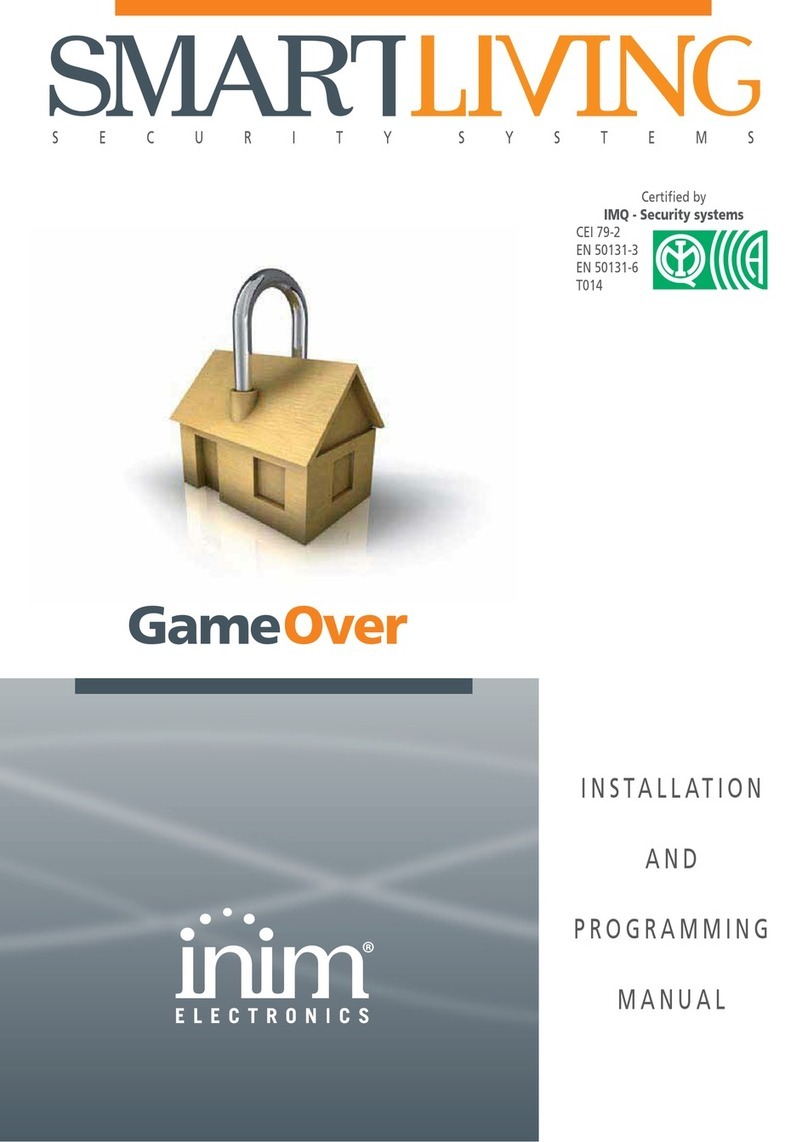
INIM
INIM GameOver SmartLiving 505 Installation and programming manual
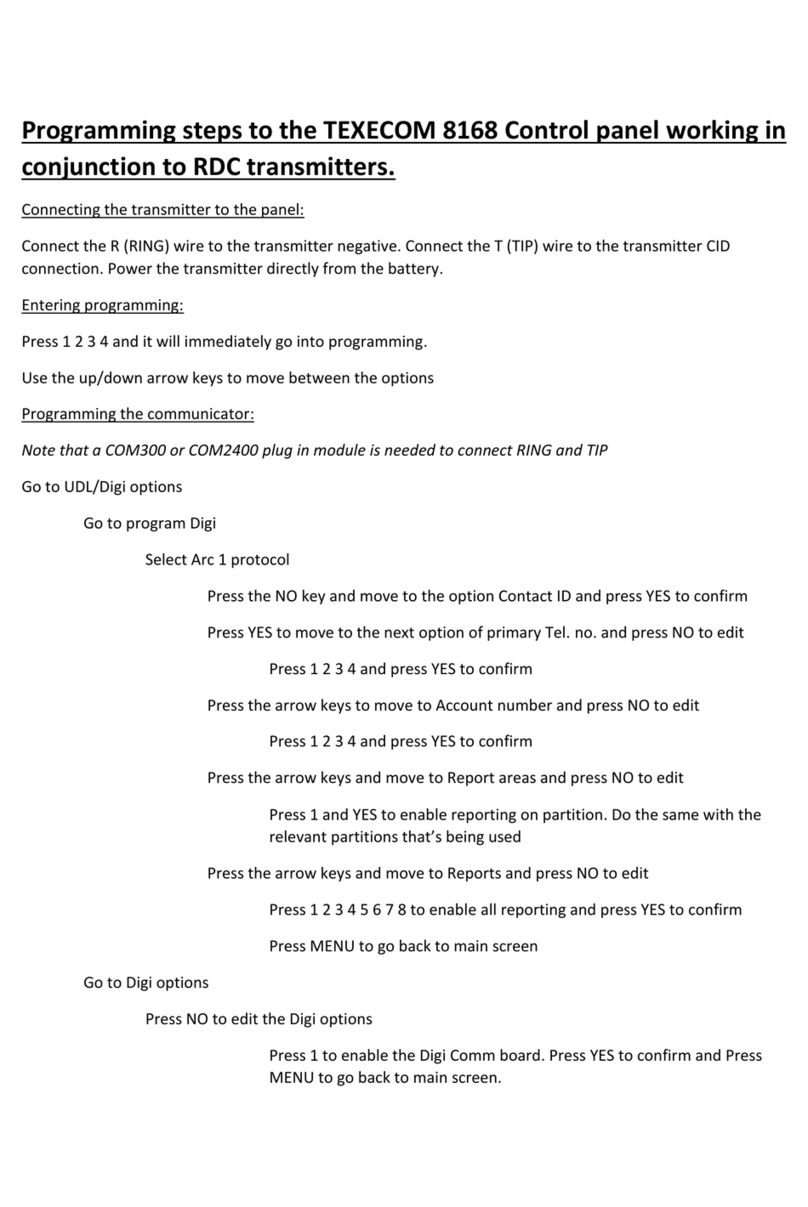
Texecom
Texecom Premier 8168 Programming steps

Veris
Veris HAWKEYE 5002 Installation instructions manual
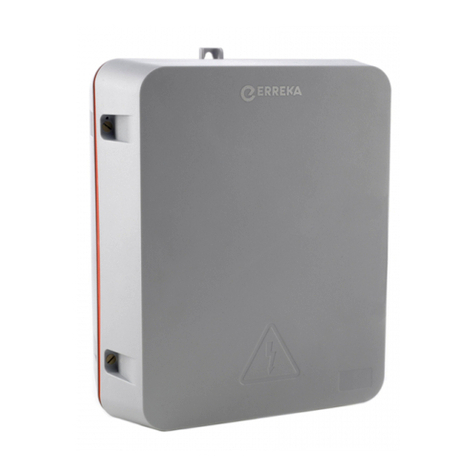
Erreka
Erreka VIVO-M203 installation guide
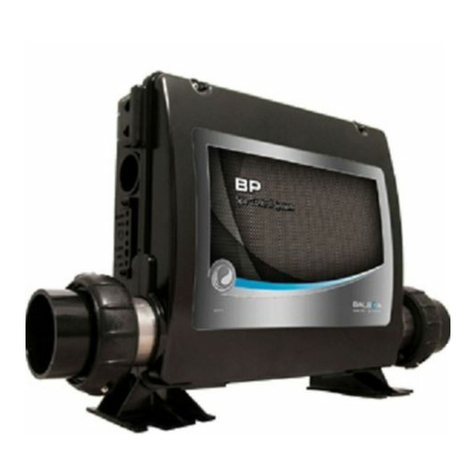
Balboa
Balboa BP2000 Quick start quide
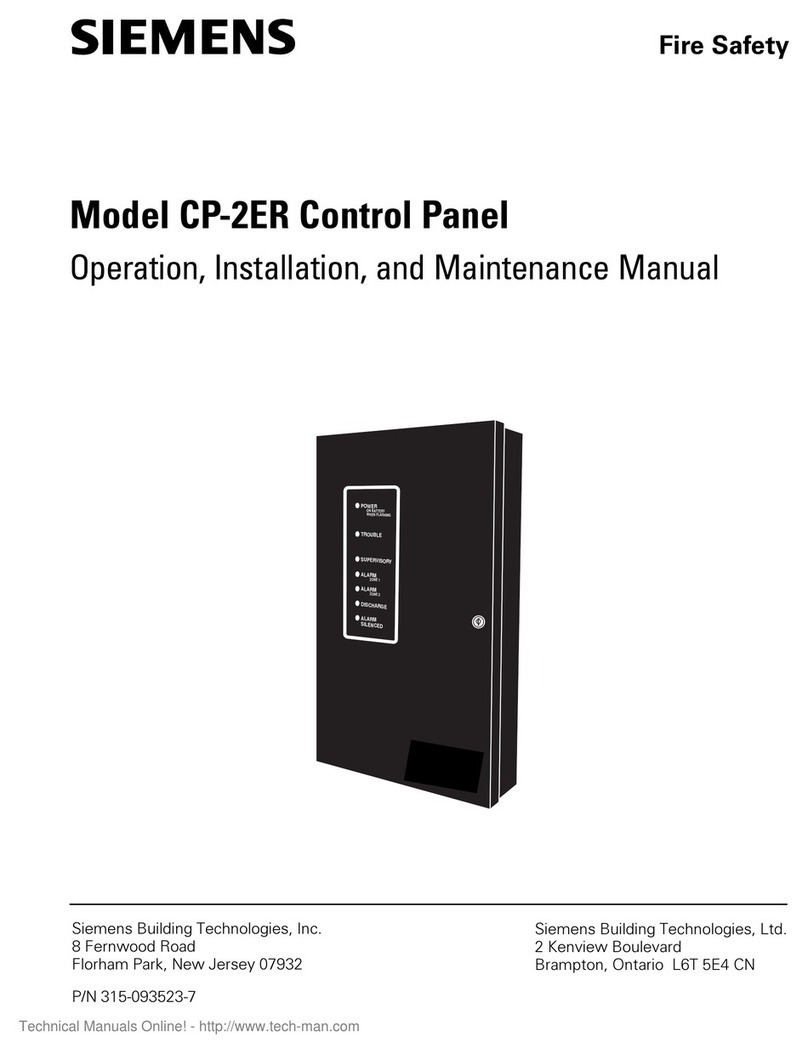
Siemens
Siemens CP-2ER Operation, installation, and maintenance manual
